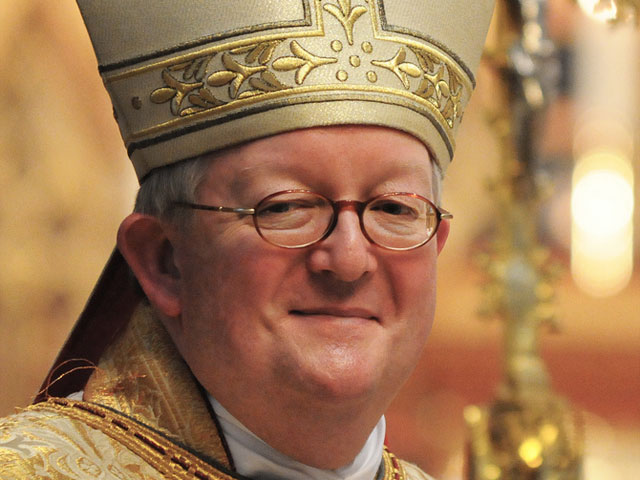This is a challenging day to be a journalist on the science beat, if the goal is to avoid ultimate questions.
I am happy to report that The Washington Post — to my surprise, quite frankly — didn’t try to avoid the obvious. Here’s the top of its story on the Big Bang update that is making global headlines:
In the beginning, the universe got very big very fast, transforming itself in a fraction of an instant from something almost infinitesimally small to something imponderably vast, a cosmos so huge that no one will ever be able to see it all.
This is the premise of an idea called cosmic inflation — a powerful twist on the big-bang theory — and Monday it received a major boost from an experiment at the South Pole called BICEP2. A team of astronomers led by John Kovac of the Harvard-Smithsonian Center for Astrophysics announced that it had detected ripples from gravitational waves created in a violent inflationary event at the dawn of time.
Say what? “In the beginning”?
Anyone who starts a story on this issue with “In the beginning” has to know that many American readers are going to connect that with, well, this passage that opens the Gospel of John:
1. In the beginning was the Word, and the Word was with God, and the Word was God. 2. The same was in the beginning with God. 3. All things were made by him; and without him was not any thing made that was made.
Next question: What is the best verb here, science writers?
So the universe “got very big very fast, transforming itself” from nothing or next to nothing into something really big? It “transformed itself”?
To it’s credit, the Post team did not settle for one verb in its coverage of this amazing development. That same passage the opens the story also uses, well, the C-word. The gravitational waves were “created” in an event at the “dawn of time.” Yes, the word “created” certainly raises an obvious question or two. Later, the linguistic plot thickens:
Cosmology, the study of the universe on the largest scales, has already been roiled by the 1998 discovery that the cosmos is not merely expanding but doing so at an accelerating rate, because of what has been called “dark energy.” Just as that discovery has implications for the ultimate fate of the universe, this new one provides a stunning look back at the moment the universe was born.
And what existed before the universe “was born” and who, or what, gave birth?
Questions, questions, questions. At some point, the professionals behind this story needed to admit that this development raises questions that transcend science. Finally, there is this:
It is unclear how long this inflationary epoch lasted. Kovac calculated that in that first fraction of a second the volume of the universe increased by a factor of 10 to the 26th power, going from subatomic to cosmic.
This is obviously difficult terrain for theorists, and the question of why there is something rather than nothing creeps into realms traditionally governed by theologians. But theoretical physicists say that empty space is not empty, that the vacuum crackles with energy and that quantum physics permits such mind-boggling events as a universe popping up seemingly out of nowhere.
The story does not follow up on that observation but, at this point, I think it would be asking too much for the breaking-news science team to turn out a feature on the theological and metaphysical discussions that are just around the corner. I think it was bold, and appropriate, for the Post to at least mention the religious implications of this discussion. This opens the door to future coverage of, hopefully, a wide spectrum of religious points of view. Can you say, “Finely tuned universe”?
Contrast the Post approach with the language used at The New York Times:
A potential hitch in the presumed course of cosmic evolution could have infused space itself with a special energy that exerted a repulsive force, causing the universe to swell faster than the speed of light for a prodigiously violent instant.
And who or what set the “presumed course” of “cosmic evolution” and who or what caused this “hitch” in the clockwork mechanism? Once again, there is some question about the meaning of the word “evolution” when the question involves that whole something-from-nothing thing. How does nothing evolve into something? If there is a tiny pinprick of something, where did that come from? The various schools of evolutionary thought tend to work best when explaining changes in a system — micro or macro — that at least EXISTS.
While the Post team saw the ghost in the universe machine, the Times editors tried to avoid it altogether. The result looks something like this:
Physicists recognize four forces at work in the world today: gravity, electromagnetism, and strong and weak nuclear forces. But they have long suspected that those are simply different manifestations of a single unified force that ruled the universe in its earliest, hottest moments.
As the universe cooled, according to this theory, there was a fall from grace, like some old folk mythology of gods or brothers falling out with each other. The laws of physics evolved, with one force after another splitting away.
Ah, so is that “single unified force that ruled the universe” kind of like THE Force? You know, the one that surrounds us, penetrates us and binds the universe together, or words to that effect?
Just asking. I’m not trying to argue the science here, by the way. I’m simply saying that it is hard to discuss these issues — even in mainstream news publications — without seeing the bigger questions that will interest millions of readers.
So why try to avoid the obvious?











